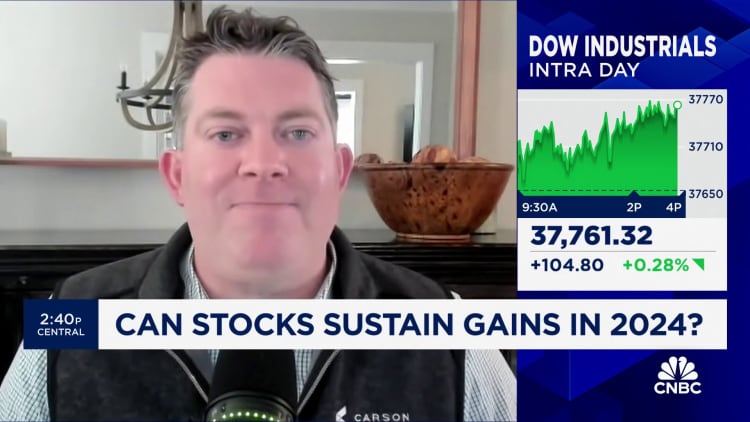
Stocks fell slightly on Friday, but the S&P 500 closed out 2023 with a surprising gain of 24% as inflation slowed, the economy remained strong and the Federal Reserve signaled an end to its rate-hiking campaign.
The S&P 500 rose for nine straight weeks to end the year, its best win streak since 2004. Big Tech stocks lifted the Nasdaq Composite to its best year since 2020 on AI enthusiasm.
The broad index fell 0.28% to settle at 4,769.83, with a 24.2% gain for the year. The S&P 500 ends 2023 just short of a new all-time high. At one point on Friday, it climbed within 9 points, or less than 0.2%, from its record close of 4,796.56 attained in January 2022.
The Dow Jones Industrial Average lost 20.56 points, or 0.05%, to close at 37,689.54 on Friday. It finished the year with a 13.7% gain and notched a new record during 2023. The Nasdaq Composite edged down 0.56% to 15,011.35 for the session, but rose 43.4% for its best year since 2020.
“Momentum continues to remain favorable heading into year end,” said Mona Mahajan, senior investment strategist at Edward Jones. “It’s been quite a phenomenal run.”

The S&P 500 is on the cusp of a new record high.
The S&P 500 added 0.3% on the week. The Dow and Nasdaq gained 0.8% and 0.1% for the week, respectively, to clinch their longest weekly winning streaks since 2019.
Stocks bounced back this year after a rough 2022. The story for the better part of the year was the excitement around artificial intelligence fueling big gains for the “Magnificent 7” stocks like Nvidia and Microsoft. The enthusiasm bolstered the indexes even as the average stock struggled amid rising interest rates and fueled the outperformance of the tech-heavy Nasdaq.

The Nasdaq Composite has surged more than 40% in 2023.
But with the Federal Reserve signaling it is likely done with rate hikes, and could even cut rates multiple times next year, the 10-year Treasury yield dove from above 5% in late October to less than 3.9% on Friday. As rates fell and labor data remained strong, investors ended the year growing more confident in a possible “soft landing” where the U.S. economy avoids a recession.
As a result, the market rally broadened out in the fourth quarter, with the industrial-heavy Dow making a string of record highs in December. The small-cap Russell 2000 rose more than 12% in December and clinched its best month since November 2020. It also notched its best quarter since the fourth quarter of 2020.
This expansion in market breadth will likely continue into the new year, although a period of consolidation isn’t out of the question as some of the high-fliers “recalibrate,” said Nancy Tengler, CEO & CIO of Laffer Tengler Investments.
Wall Street will also keep a watchful eye as more Fed speakers weigh in on the prospect of rate cuts ahead of January’s meeting, Mahajan said, which could lead to some early volatility in the new year.
“The risk with the Fed is that they will either wait too long, or move too quickly,” Tengler said. “If they cut too soon, and we do see inflation resurge, that’s going to be bad news for everybody.”
